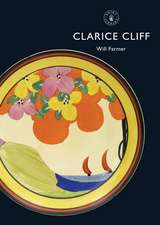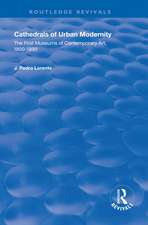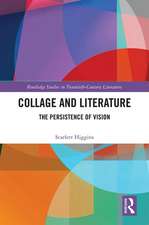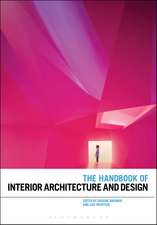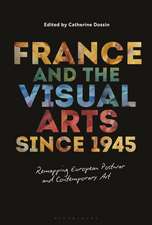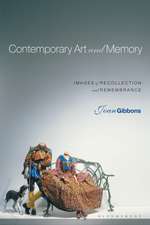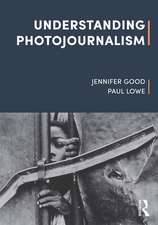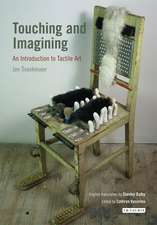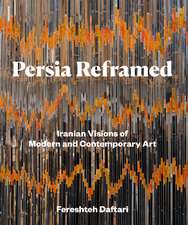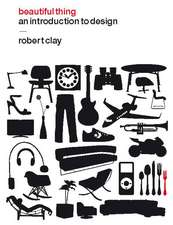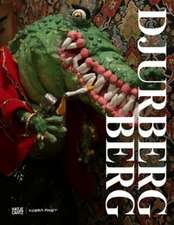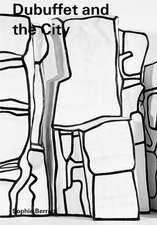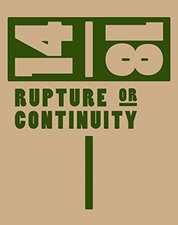The Life of Forms in Art: Modernism, Organism, Vitality
Autor Dr Brandon Tayloren Limba Engleză Paperback – 28 oct 2020
| Toate formatele și edițiile | Preț | Express |
|---|---|---|
| Paperback (1) | 207.65 lei 3-5 săpt. | +46.38 lei 7-13 zile |
| Bloomsbury Publishing – 28 oct 2020 | 207.65 lei 3-5 săpt. | +46.38 lei 7-13 zile |
| Hardback (1) | 600.09 lei 3-5 săpt. | |
| Bloomsbury Publishing – 28 oct 2020 | 600.09 lei 3-5 săpt. |
Preț: 207.65 lei
Preț vechi: 232.10 lei
-11% Nou
Puncte Express: 311
Preț estimativ în valută:
39.73€ • 43.30$ • 33.48£
39.73€ • 43.30$ • 33.48£
Carte disponibilă
Livrare economică 02-16 aprilie
Livrare express 19-25 martie pentru 56.37 lei
Preluare comenzi: 021 569.72.76
Specificații
ISBN-13: 9781501356018
ISBN-10: 1501356011
Pagini: 272
Ilustrații: 42 colour and 82 bw illus
Dimensiuni: 156 x 234 x 17 mm
Greutate: 0.5 kg
Editura: Bloomsbury Publishing
Colecția Bloomsbury Visual Arts
Locul publicării:New York, United States
ISBN-10: 1501356011
Pagini: 272
Ilustrații: 42 colour and 82 bw illus
Dimensiuni: 156 x 234 x 17 mm
Greutate: 0.5 kg
Editura: Bloomsbury Publishing
Colecția Bloomsbury Visual Arts
Locul publicării:New York, United States
Caracteristici
Major works by Picasso, Miró, Dalí, Kandinsky, Hepworth, Moore, Arp, Pollock, Motherwell and more, brought into vivid focus by a leading and internationally known art historian
Notă biografică
Brandon Taylor is Professor Emeritus in History of Art at the University of Southampton, England, and Visiting Tutor in History and Theory of Art at the Ruskin School of Art, University of Oxford. His research interests include modern and contemporary art, artists' writings, the history of art institutions, and East European art. His most recent books include Collage: The Making of Modern Art (Thames and Hudson, London 2004), After Constructivism (Yale University Press 2014), and St Ives and British Modernism (Pallant House Gallery, Chichester 2015). He exhibits occasionally as a painter.
Cuprins
List of platesList of figuresPrelude: On Life and Form1. Organicity2. Biomorphism3. Ambiguity4. Monstrosity5. Dialectics6. LiquifactionCodaAcknowledgementsNotesIndex
Recenzii
Taylor's unbounded curiosity and eye for detail make for a fascinatingly complex narrative.
[This book] really does unite and relate science and the arts in a deeper and more meaningful way . What is impressive about Taylor's study is that he shows the way in which art is not hived off into a separate sanctum, but both influences and draws on the elements of surrounding life, be they political, sociological, philosophical, scientific.
This book is a tour de force by one of the foremost scholars of abstract art. Delving into a fascinating array of scientific and philosophical sources, Brandon Taylor invites us to think afresh about modern art's enduring preoccupation with dynamic processes and the becoming of forms. Across a broad range of compelling analyses, he unearths little-known gems and sheds valuable new light on canonical examples. Like the artworks that it brings into sharp focus, the argument teems with vital energy.
Brandon Taylor's remarkable study of the pervasive impact of vitalist concepts of "aesthetic monism" on the interwar avant-garde is an important and timely contribution that greatly enriches our understanding of the art and culture of this complex era.
[This book] really does unite and relate science and the arts in a deeper and more meaningful way . What is impressive about Taylor's study is that he shows the way in which art is not hived off into a separate sanctum, but both influences and draws on the elements of surrounding life, be they political, sociological, philosophical, scientific.
This book is a tour de force by one of the foremost scholars of abstract art. Delving into a fascinating array of scientific and philosophical sources, Brandon Taylor invites us to think afresh about modern art's enduring preoccupation with dynamic processes and the becoming of forms. Across a broad range of compelling analyses, he unearths little-known gems and sheds valuable new light on canonical examples. Like the artworks that it brings into sharp focus, the argument teems with vital energy.
Brandon Taylor's remarkable study of the pervasive impact of vitalist concepts of "aesthetic monism" on the interwar avant-garde is an important and timely contribution that greatly enriches our understanding of the art and culture of this complex era.


